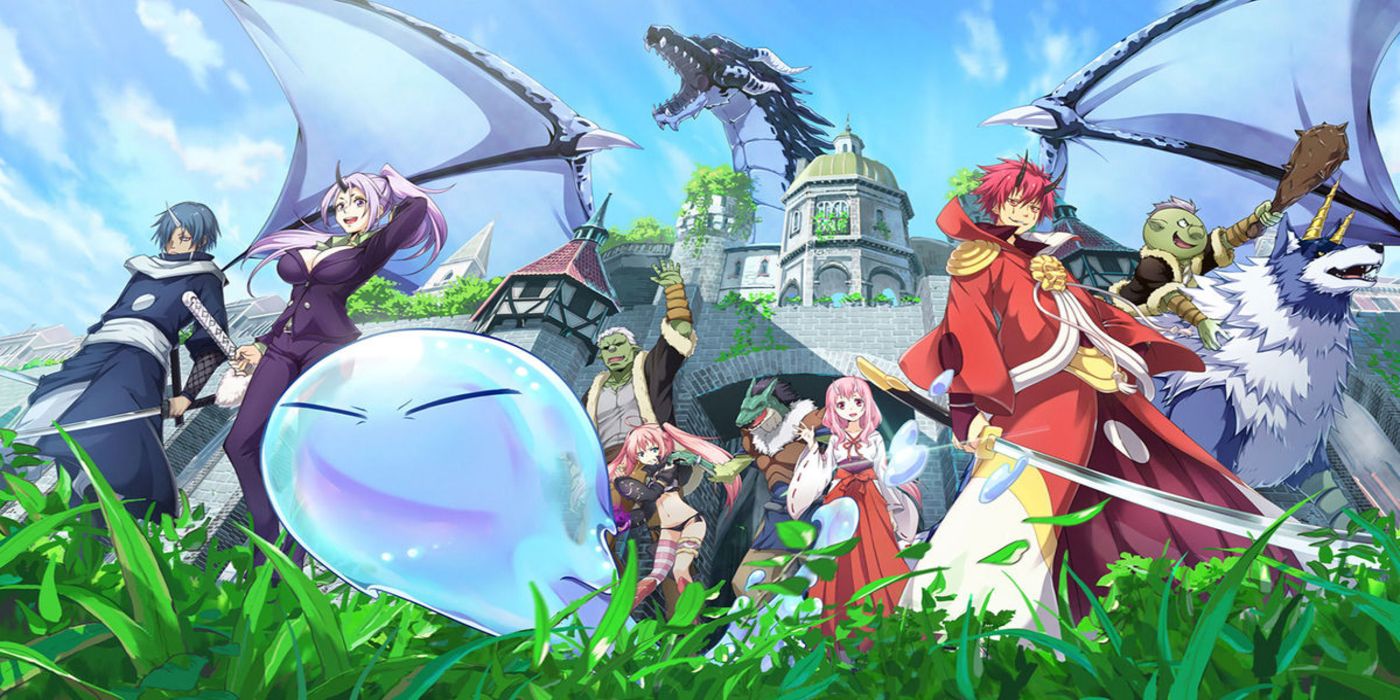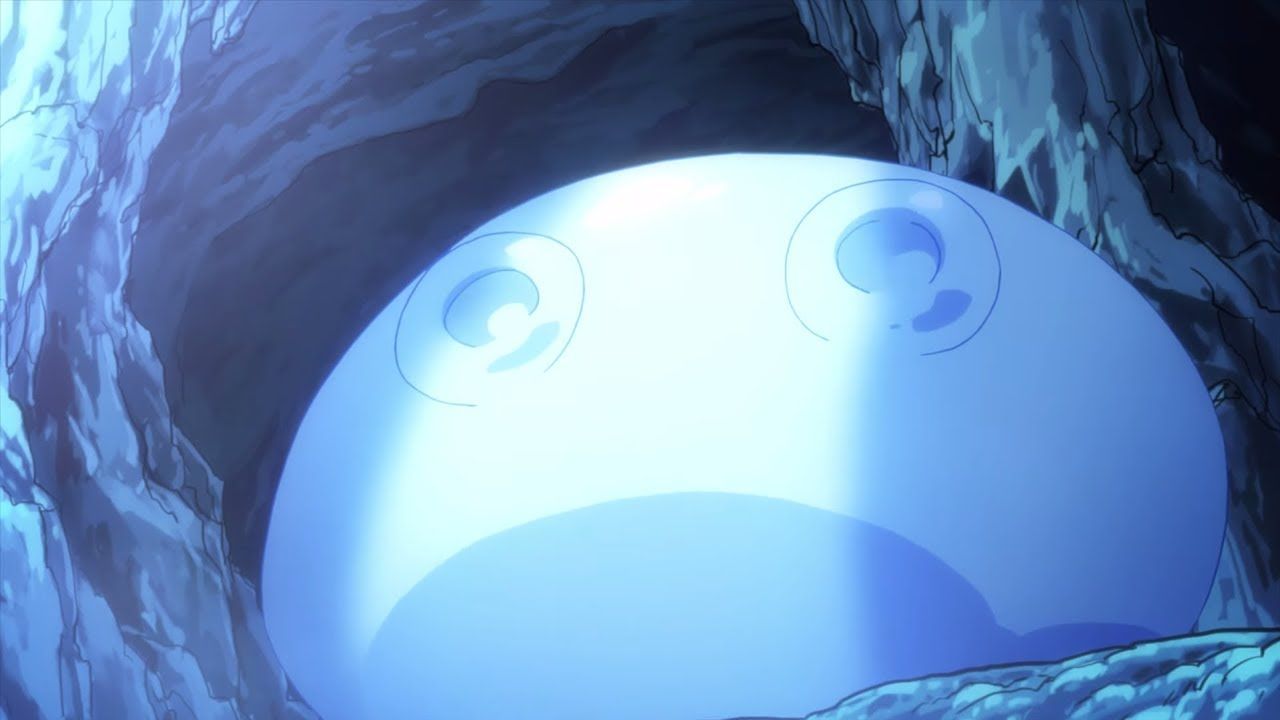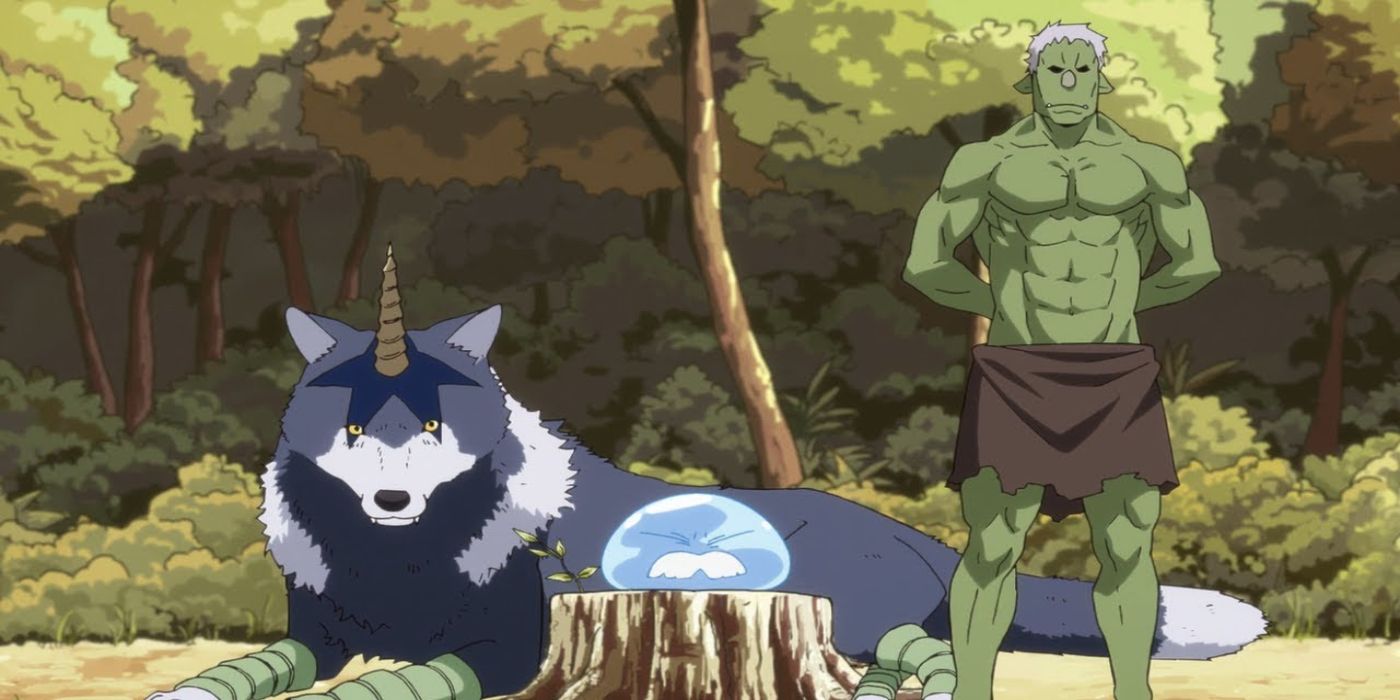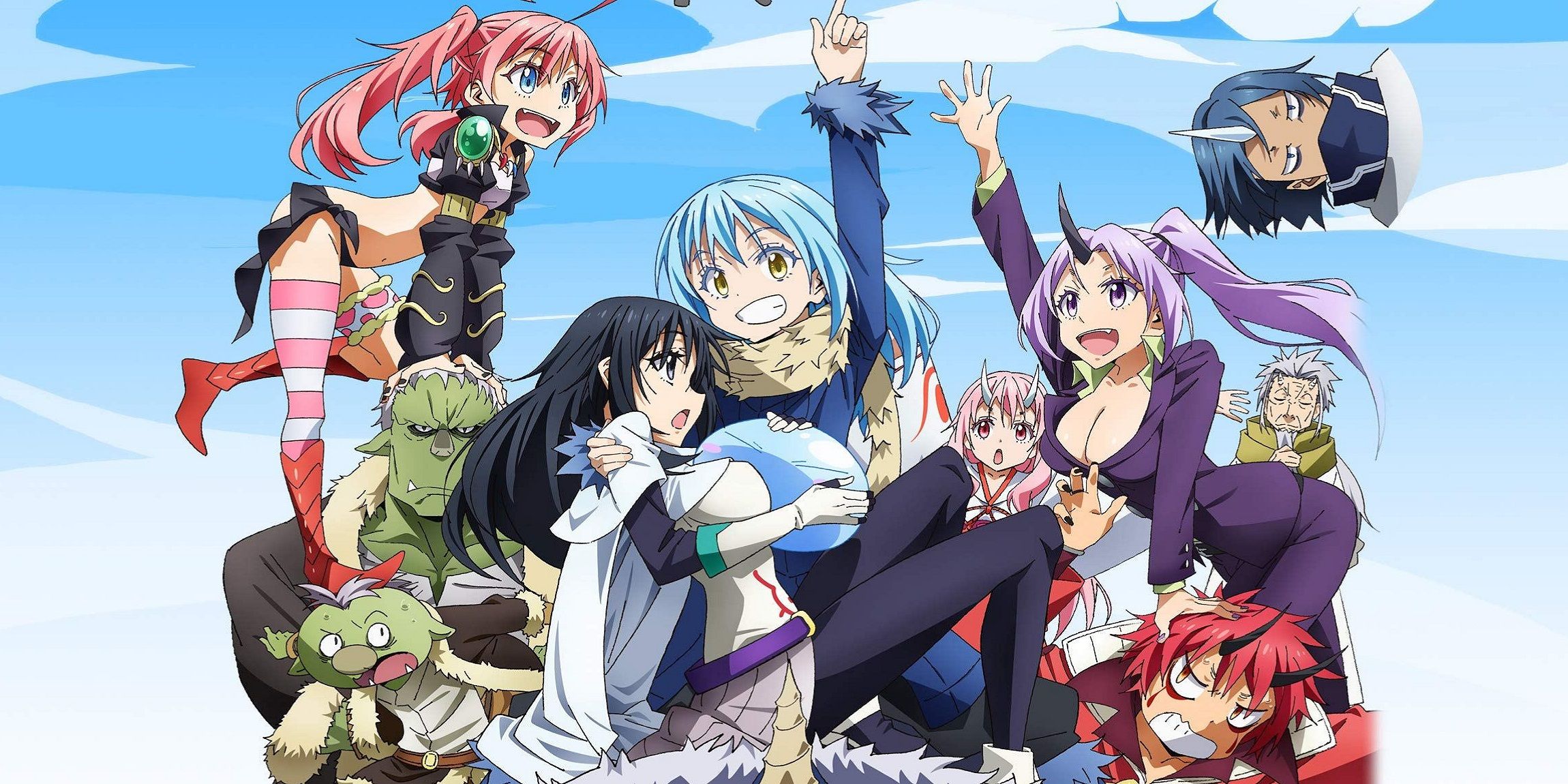Isekai, or portal fantasy, is easily one of the most popular current genres in manga and anime. Though its roots can be traced back centuries in Japanese literature, '90s anime series such as Inuyasha and The Vision of Escaflowne helped popularize it as a formal genre in Japan more recently, while the latest modern push for the genre undeniably stems from series such as Re:Zero and Sword Art Online.
The fundamental hallmark of the genre involves the protagonist (typically a young slacker) being whisked away to a vastly different world, typically a fantasy or RPG themed one, either through resurrection or an Alice In Wonderland-style rabbit hole. Unfortunately, this popularity has led to over-saturation, making isekai incredibly stagnant in the process. It doesn’t help that it is often also combined with the equally as trite and ubiquitous harem genre. One breath of fresh air for isekai, however, is That Time I Got Reincarnated As A Slime. The oddball title belies a show that's a slow burn journey, but an incredible world-builder if you stick with it.
WHAT'S IT ABOUT?
The show begins with us being introduced to Satoru Mikami, a nearly-middle-aged, everyday Japanese salary man. While meeting with a coworker and his girlfriend, Mikami is killed by a passing robber, leading to a series of dying requests. This leads to his being reincarnated in another world as a seemingly innocuous slime -- yes, a literal slime -- though he's one with the ability to imitate the powers and even the appearance of others, much like Pokémon's Ditto or Nintendo's Kirby.
This is thanks to another new power of his: The Great Sage. This guiding (and chiding) consciousness acts as Mikami’s mentor in this new world. From there, he befriends a catastrophically powerful dragon named Veldora Tempest, takes the new name of Rimuru Tempest, and encounters a legion of different fantasy races and species.
The series started as a novel series that ran from 2013-16, which then spawned a light novel series and manga, the latter of which was the main influence on the anime adaptation. The manga has also received two spin-off series: That Time I Got Reincarnated as a Slime: How Monster Country Works/How Monsters Walk, and That Time I Got Reincarnated as a Corporate Slave. The former is a side-story, detailing the inner workings of the world established in the manga's previous issues. The latter, however, sees Rimuru wake up back into his normal world... but still in his slime body!
RELATED: The Best Anime Arriving On All4 (That You Might Not Have Heard Of)
THE FIRST SEASON
Most of Season 1 is centered around Rimuru's encounters with a goblin village, to whom Rimuru becomes a local hero after helping the goblins defend against an invading force. This has the knock-on effect of both putting a target on his slimy back, but also encouraging the other disparate races through this world to want to unite under Rimuru's protection as a kingdom.
As opposed to the more action-focused shonen genre, Reincarnated As A Slime instead puts most of its energy into world-building and firmly establishing the characters that comprise this new world of monsters.
A lot of focus is also put upon Rimuru mastering his new abilities, as well as those granted other new powers of their own. There aren't as clearly defined arcs or overarching antagonists in the series as there in some of its competition, giving the series a sort of laid back attribute -- mirroring the positivity of its protagonist.
The nation-building also mirrors video games such as Civilization. The fantasy setting and races seen are likely inspired by various fantasy video games as well, with the slime in particular being the mascot of the highly successful Dragon Quest series.
RELATED: The 10 Most Powerful Sword Art Online Characters, Ranked
WHY DO FANS LIKE IT?
Considering its status as such a breath of fresh air for isekai, Reincarnated As A Slime actually relies upon many of the tropes of the genre. This includes, of course, the basic premise of a loser being taken to a far away world; the fantasy setting and the arguable harem elements. One change, however, is the analytical nature of the protagonist. This probably stems from the fact that Rimuru is 37-years-old, a good bit older than most isekai heroes. It's this attention to detail, as well as host of optimism and charisma that make him such an effective leader.
This optimism is exemplified in Rimuru's tolerance and quest to make his kingdom inclusive for all of the otherwise warring factions in his new world. The less than frequent physical conflicts in the show are ended with as few casualties as possible from Rimuru, and he even invites his defeated opponents to join his side. Though the races involved are of fantastic nature, the themes of tolerance, diversity and forgiveness are universal, adding a bit of pathos to the story.
The harem parts, while there, aren't as frequent as in other anime, and many times turned on their head to set the show apart from the competition. Conversely, the action, when it's there, is very well done, with crisp and dynamic animation packing power into each attack. The aforementioned world-building, similar to another newcomer, Dr. Stone, shows a level of detail and passion rarely seen in a genre that typically focuses solely on over-the-top fights and fan service.
Rimuru's kingdom starts small, but its intricate evolution into a powerhouse nation is one of the show's strong suits. Plus, the very nature of having the protagonist be as seemingly inept a creature as a slime is an obvious standout gimmick from the get-go.
The show's second season doesn't begin airing until 2020, so those curious about it have plenty of time to catch up with the show that's reignited anime fans' interest in isekai.




